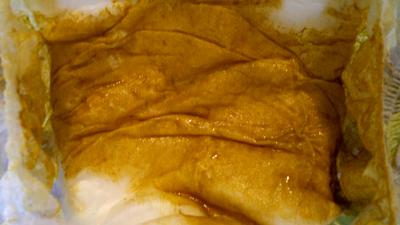Solving Foremilk–Hindmilk Issues (lactose overload): 90% of Moms See Results with These Simple Fixes
Usually, when foremilk moves towards the nipple, it will combine with any milk left in the breasts previously; this resulting mixture is the perfect food for any baby. BUT. If you struggle with an oversupply, things could get a little tricky.

Foremilk Hindmilk Imbalance
Lactation professionals have always differentiated between foremilk and hindmilk but have recently decided not to, as this differentiation causes confusion when breastfeeding. There is only one type of milk; as a baby nurses, the fat content in the milk increases, and the milk gradually becomes fattier and fattier during a feeding. As a result of the change in how we approach this subject, I have updated this article with all recent studies and information in italics. Is foremilk-hindmilk imbalance a myth? No, not if you have an oversupply; we discuss this below.
Why is my breast milk watery?
If you've ever left your milk in the fridge for a while, you might have noticed that the milk separates, with a fatty layer on top. This is a normal occurrence and absolutely nothing to worry about. Some mothers may question whether they produce enough milk fat for their babies.

What Is Foremilk?
Foremilk meaning: Foremilk is the milk that lies in the front of your breast's milk-producing cells (alveoli); this is the first milk your little one drinks during a breastfeeding session.
This milk is watery when compared to hindmilk and is usually bluish. Don't underestimate the importance of foremilk, though. Fore milk consists of high lactose and low fat; it, therefore, is excellent at quenching a baby's thirst.

What Is Hindmilk?
Hindmilk meaning: Hindmilk is the milk further back in your breast's milk-producing cells (alveoli). It is calorie-loaded and has a much higher fat percentage. It also looks thicker and darker in color. Hindmilk promotes weight gain.
Hindmilk contains between 23 and 35 more calories per 100ml compared to foremilk.

Breastfeeding Class for Moms
Many mothers worry about breastfeeding not working for them, the pain and struggles associated with latching, and concerns about milk supply. The course tackles these fears head-on.
The course offers 13 easy-to-watch lessons, providing a step-by-step guide to breastfeeding.
Foremilk vs Hindmilk
Why the difference in milk?
Milk passes the alveoli (milk-producing cells) when it is produced. Most of the fat in breast milk sticks to the back and sides of the alveoli (the fatty hindmilk), while the rest of the milk collects in the front of the alveoli (less fatty foremilk).
So, the fat gets stuck further back in the breast's alveoli, which causes a significant difference between the milk at the beginning of a feed and the milk at the end. The fat content in milk gradually changes during a feeding, and there is no precise time when foremilk switches to hindmilk.
The longer a mother waits between feedings, the more foremilk is allowed to collect and the longer it will take before her baby receives the hindmilk.
Mothers only really produce one type of milk, although the fat content of the milk changes throughout a feeding session. The fat content depends on how full the breast is and how long the breast milk has been in the milk ducts.
- Recent Research 2021 - Recent research suggests that the total amount of milk consumed daily determines their weight, not the hindmilk. It goes further to suggest that foremilk is not always low in fat. This is due to differences in breastfeeding patterns. If a baby breastfeeds soon after the last breastfeeding session, the foremilk will contain a higher fat percentage at that specific feeding.

How Do I Know If I Have an Imbalance?
Usually, when the watery milk moves towards the nipple, it will combine with any milk left in the breasts previously; this resulting mixture of foremilk and hindmilk is the perfect food for any baby.
BUT
Things could get a little tricky if you struggle with hyperlactation or oversupply. In this case, your baby will receive too much foremilk before the hindmilk can reach the nipple; this causes a lactose overload (hindmilk foremilk imbalance). The result is that your baby will be ingesting too much lactose.
Babies produce a substance called lactase, which breaks down the lactose in breast milk. When there is too much lactose to break down, your baby will experience excessive flatulence (gassiness), pain (colic symptoms), and green, foamy, explosive stools.
A lactose overload is often mistaken for allergies or lactose intolerance. Lactose intolerance, though, is exceptionally rare. Only one in every thirty thousand babies is diagnosed with galactosemia (true lactose intolerance).
Recent Research 2021 - The only time the foremilk and hindmilk imbalance concept makes sense is when longer intervals (longer than three hours) occur between feeding sessions. The longer the time between feeding sessions, the higher the difference in fat content will be.
Lactose Overload Symptoms (When You Have an Oversupply)
Can too much foremilk be bad for babies?
- You will notice green frothy explosive stools. Lactose-rich and fat-deficient milk will cause osmotic diarrhea.
- Blood in stools. You may also notice tiny amounts of blood in your baby's stool, and this is due to the gut irritation caused by high quantities of unabsorbed lactose.
- Green foremilk poop. A green stool cannot be the only indicator. Green stools can result from many other things, such as the foods you eat (transferred via the milk); it can also occur during the introduction of solids, during teething, and with a tummy bug. As long as everything else is normal, such as the consistency of the stool, and your baby doesn't show any signs of fussiness, you don't need to worry about green stools. But, If your baby's stool is green, slimy, watery, or foamy, and your baby seems fussier than usual, it may be a foremilk hindmilk imbalance poop. You can do a few things to rectify it; these are mentioned below.
- Gassiness. All babies struggle with gas pain; some just struggle with this more than others. It would be best if you didn't change your feeding patterns unnecessarily. You might think you have a hindmilk-foremilk imbalance when it could just be normal gastric development causing the fussiness.
- Diaper rash due to acidic stools.
- The baby spits up a lot.
- A lactose overload may lead to colic symptoms and fussing during and after feeds.
- Increased frequency of wanting to feed with very short feeding sessions. (5 - 10 Minutes); not becoming satisfied. Many mothers with oversupply issues may think they have a low milk supply even though their breasts are always full; because their babies continually need to feed.
- Slow weight gain.
- Choking at feeds and excessive milk spray is primarily due to an accompanying fast flow of milk.
- The mother may be engorged and may struggle with plugged ducts and mastitis.
- Cracked and painful nipples.
Foremilk/Hindmilk Imbalance Poop Pictures


How to Fix a Foremilk Hindmilk Imbalance?
How do you fix lactose overload?
- Ensure a good latch.
- Try to change breastfeeding positions. The reclined breastfeeding position is recommended as well as the side-lying position.
- Block Feeding. Do not time your feedings. Breastfeed from only one breast per feeding. Empty the other breasts just a little for pain relief. This encourages the release of serotonin in the breast, an inhibitor of lactation. The longer the breast goes unemptied, the more inhibitor is released, lowering the amount of milk produced. Usually, only a week of block feeding is necessary to rectify an oversupply issue. Sometimes a mother may need to do this for a few extra days. Alternatively, the same breast can be emptied for two consecutive feedings instead of one. By only partially emptying both breasts, the problem is perpetuated. (1)
- Sometimes, an oversupply is accompanied by a forceful letdown (A fast flow of milk).
"How do you increase fat in breast milk and produce more hindmilk?"

Exclusive Pumping With Lactose Overload
- When you express your milk and know you have an oversupply, it would be best to mix all milk expressed in one sitting to ensure that you are not feeding your baby a bottle filled with too much lactose.
- Pump until your breasts seem soft and thoroughly drained. The emptier the breasts, the fattier your milk will be.
- Express milk less frequently throughout the day. Instead of pumping eight times, for example, you could pump six times.
- Use breast compression to remove milk more efficiently while pumping.
- Dump some milk if you have to. If you feel you have a severe oversupply, you can dump the first ounce or more and then keep the rest.

The Tushbaby Hip Carrier
With its ergonomic design and comfortable waistband, Tushbaby provides optimal support for you and your baby. Say goodbye to shoulder and back pain from traditional carriers, as Tushbaby evenly distributes your baby's weight, relieving strain and promoting better posture.
Before You Change Any Feeding Patterns.
- Keep an eye on your baby's weight.
- Look for ways to keep colic symptoms at bay.
- Get help. Contact your local La Leche League. Their services are free. They can evaluate the situation and advise accordingly.

Should I Worry about Foremilk and Hindmilk?
- Recent Research 2021 - Do not worry about fore milk hindmilk imbalance (if you don't have an oversupply). Trying to coax your baby to feed for more extended stretches will not make a difference. If your feedings remove sufficient milk and you do not time your feedings, your baby will receive just the right amount of milk. The most important thing is that your baby is gaining weight and receiving enough milk within 24 hours. The research concludes that whether babies are fed for longer intervals or more frequent feedings, they take in about the same amount of milk and fat overall.
In Conclusion
Mothers with oversupply issues should encourage their babies to nurse long enough on one side to receive the fattier hindmilk before switching breasts. Expressing your milk before a feeding session will ensure that your baby gets enough calories and less lactose while taking in less milk, keeping your baby full for more extended periods.
After trying the above methods, you should notice that your baby's stools start normalizing. Your baby should also seem much less fussy at the breast and after breastfeeding.
For those mothers who do not have oversupply, the timed release of the various components of breast milk (foremilk and hindmilk) leads to a feed that assists in minimizing gastrointestinal issues. With that being said, if you do not have an oversupply, you do not need to concern yourself about the fat content of your milk.
1. Management of hyperlactation syndrome by full drainage and block feeding methods
Lucca Jisha M Lucca1, Arathi Santhosh2
Q&A
My breast milk seems foamy in the fridge
Breast milk can appear foamy in the fridge due to a few common reasons, which are generally not a cause for concern:
- Air Bubbles - When breast milk is pumped and stored, air can get mixed in, creating bubbles. This can cause the milk to appear foamy, especially if it was shaken during the transfer to a storage container.
- Lipoprotein Structure - The composition of breast milk includes fats and proteins that can sometimes trap air, leading to a foamy appearance.
- Fat Separation - When breast milk is stored in the fridge, it's normal for the fat to separate and rise to the top, creating a thick layer. As this process occurs, the milk can sometimes look foamy or bubbly around the edges.
- Storage Container - The type of container used for storage might also contribute to the appearance of the milk. Some containers can cause more agitation when pouring or sealing, introducing more air into the milk.
This foamy texture does not usually affect the quality or safety of the milk. It’s important to gently swirl (not shake) the milk to mix in any separated fat layers before feeding it to your baby.

